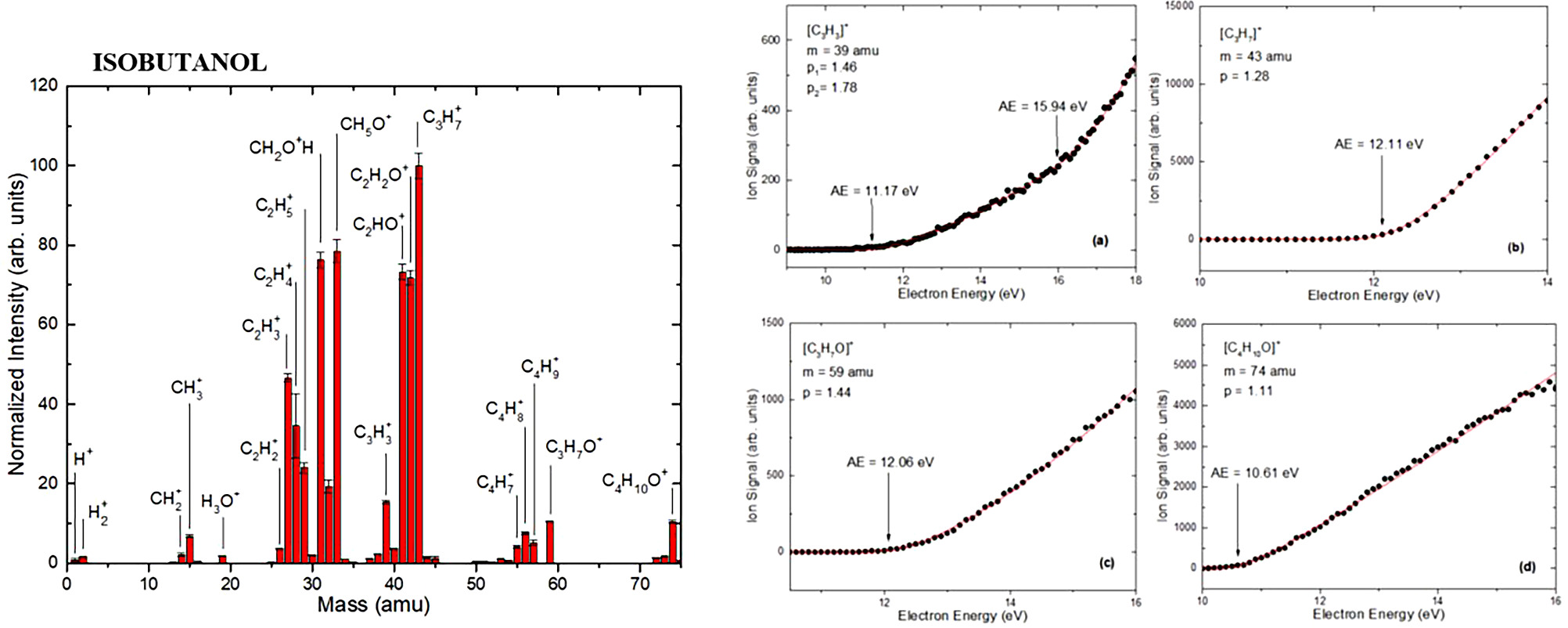https://doi.org/10.1140/epjd/s10053-024-00933-4
Regular Article – Molecular Physics and Chemical Physics
Ionic fragmentation by electron impact of isobutanol: mass spectrum, appearance energies and Wannier exponents
Departamento de Física, Universidade Federal de Juiz de Fora, 36936-900, Juiz de Fora, MG, Brazil
Received:
29
August
2024
Accepted:
7
November
2024
Published online:
28
November
2024
The mass spectrum (MS) and appearance energies (AEs) of the cationic fragments formed in electron collisions with isobutanol were investigated in this work using a HIDEN EPIC 300 mass spectrometer. We highlight here the discovery of 6 new cationic fragments in the literature for MS as well as 10 AEs and ps values reported for the first time. The MS was acquired for electron impact energy of 70 eV, in the mass region of 1–80 amu and with a resolution of 1 amu. Here we observed the formation of 45 cationic fragments, thus complementing some data previously reported in the literature, 6 of which were unpublished. The relative abundances of the peaks recorded in the MS show good agreement within the experimental error range, with the available values reported in the literature, where such comparison is carried out. The AEs were determined from the acquisition of isobutanol ionic fragmentation curves, for the electron impact energies covering the cationic fragment formation threshold region. The extended Wannier law was applied to obtain the AEs and Wannier exponents (p) of the fragments recorded in the MS, with relative intensity typically greater than 4% of the most intense fragment. This resulted in MS of isobutanol and data for 15 fragments, of which 10 of these fragments are reported for the first time in this work.
Copyright comment Springer Nature or its licensor (e.g. a society or other partner) holds exclusive rights to this article under a publishing agreement with the author(s) or other rightsholder(s); author self-archiving of the accepted manuscript version of this article is solely governed by the terms of such publishing agreement and applicable law.
© The Author(s), under exclusive licence to EDP Sciences, SIF and Springer-Verlag GmbH Germany, part of Springer Nature 2024
Springer Nature or its licensor (e.g. a society or other partner) holds exclusive rights to this article under a publishing agreement with the author(s) or other rightsholder(s); author self-archiving of the accepted manuscript version of this article is solely governed by the terms of such publishing agreement and applicable law.





